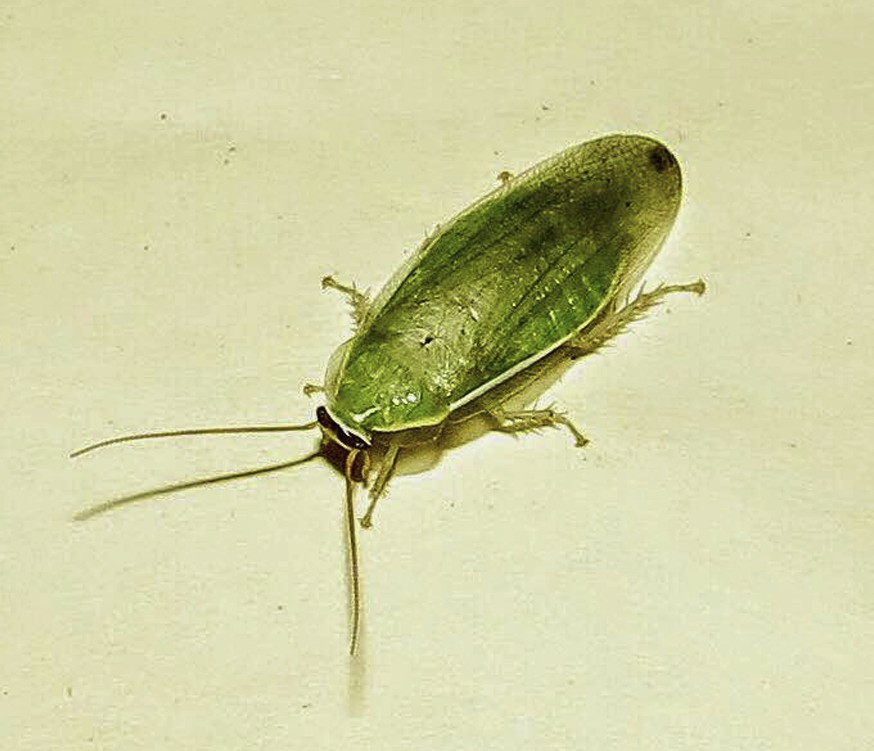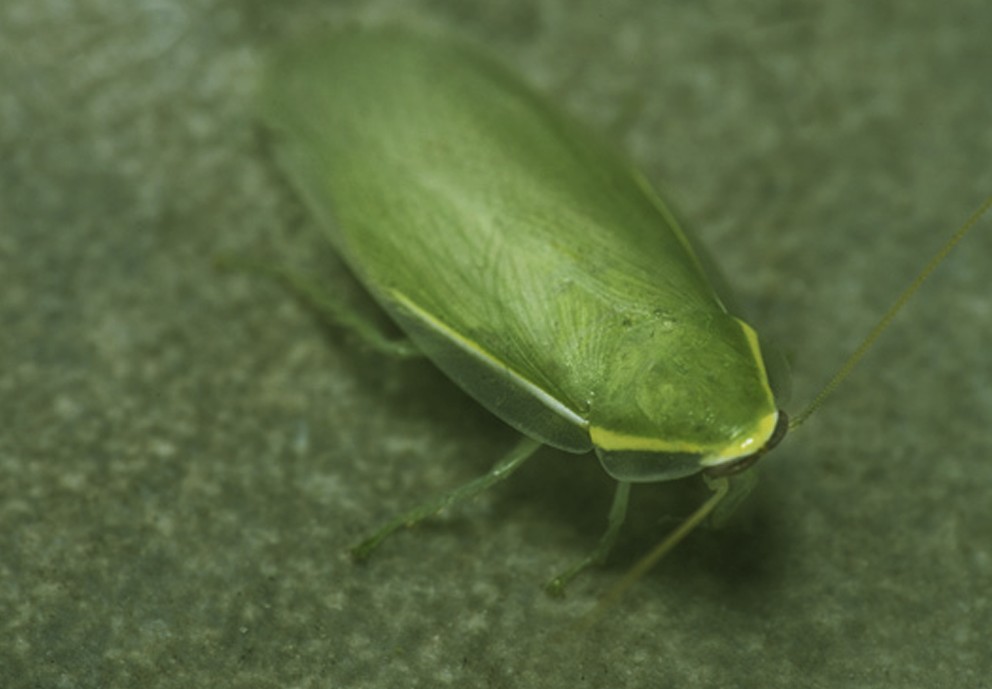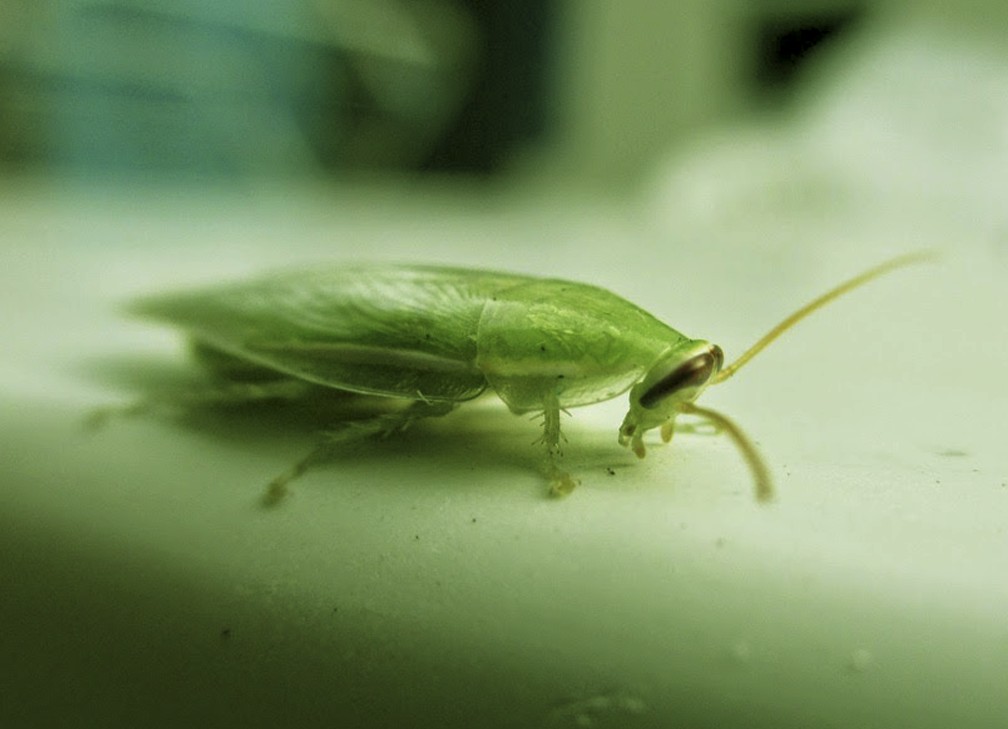Cuban Cockroach
What are Cuban Cockroaches?
Cockroaches are the absolute worst. Who amongst us hasn’t leaped out of our chairs when we spot a giant cockroach heading towards us? Especially when they are the kind that can fly? Nightmares aside, Cuban cockroaches are creatures that descended straight from hades that have survived millions of years, terrorizing households.

Picture of a Cuban Cockroach
While some people consider them pets, Cuban Cockroaches are mostly considered to be pests to households. Their scientific name is Panchlora Nivea; and as their name suggests, they’re native to Cuba and Caribbean Islands. These insects have also been found along the Gulf Coast, in parts of Carolina, Texas, and Florida. They enjoy tropical and sub-tropical climates.
Cuban cockroaches are an invasive species in the US. They are thought of having hitchhiked a ride on fruit shipments entering the states from the Caribbean. They are known to be more active during the night. These creatures generally enter homes as they are attracted to bright lights. While they don’t generally prefer the indoors, they can wreak havoc in any underbrush and mulch in gardens. They also target banana plants and can destroy them due to the lack of natural predators.
Identification of Cuban Cockroaches
In order to identify these cockroaches, you must be familiar with the type of cockroaches in your area. Cuban Cockroaches are all capable of flight, so the first thing you may want to check is that. Cuban cockroaches are also very attracted to light sources, so you may find them gathering near lamps.

What do these creatures look like? Cuban cockroaches are generally very different from the brown-banded cockroaches that people think of when imagining cockroaches. Though, who would ever want to imagine cockroaches voluntarily? The Cuban cockroach has a translucent body and pale green colouring with a yellowish underbelly. Males have a tapered and slender abdomen, while females have broader abdomen and are darker in colouration. They prefer outdoors, but if your home is hot and humid, chances are they will be hanging out indoors.
The Cuban cockroach also has thin yellow bands on its body and red compound eyes. They also have a thin yellow banding at the front of their heads. They have antennae similar to most cockroaches. They can vary in length from ¾ to 1inch long when full-grown.
At the larval stage, Cuban cockroaches are dark brown in colour. They generally hide amongst bushes and dead leaves until they mature into full-grown adults. All adult Cuban cockroaches are excellent fliers, so be sure to duck when one is flying your way.
What is their Habitat like?
Full-grown adult Cuban Cockroaches prefer the outdoors to the indoors. They are unable to lay eggs inside the house and seek out gardens. In the outdoors, they generally can be found near dying and rotting vegetation. They are especially drawn to piles of leaves and mulch and can be found in recycling vats. They are also found in lumber piles, woodpiles or other types of outdoor areas.
If your home is on a wooded lot, you are likely to be in contact with this species. These species can be found in Florida to Texas but is more common in Florida. Since they can’t spend much time indoors, they are not considered a threat. They are generally drawn to bright lights, being nocturnal in nature and seek out indoors at night.
Where can one find Cuban Cockroaches?
Endemic to Cuba and the Caribbean Islands, these insects have also been found in parts of the Gulf Coast. They are commonly found in Florida and Texas, with a high concentration in Florida. In recent years they have also been found as far north in the US as Summerville, North Carolina. It prefers humid and hot climates and tropical to sub-tropical areas. The lack of cold seasons is ideal for these cockroaches and allows them to thrive and procreate year-round.
Diet – What do they Eat?
Cockroaches aren’t all that bad when it comes to what they eat. Cockroaches are generally scavengers, and they eat almost everything they can find. The Cuban cockroach larvae feed mostly on dead and decomposing leaves and other vegetative matter. The adults are scavengers, like most cockroaches. Cuban cockroach adults eat any biological matter that they are able to find. They enjoy rotting food, carcasses, food scraps, and can even consume paper. The best way to keep them out of your kitchen, therefore, is to ensure that you keep a clean home.
Cuban Cockroach Bite
Cuban cockroaches are relatively tiny in size, ranging from ¾-1inches long and they are not known for aggression. They are generally too small for their mandibles to pierce through human skin. They are not known to be venomous and generally prefer to feed on plants and remain outdoors. Phew!
Should I be worried about Cuban Cockroaches?
Since Cuban Cockroaches are scavengers, they pose the same threats as a number of other types of cockroaches. These cockroaches often crawl through dirty spaces like garbage, dirt and decaying vegetative and animal matter. The cockroach then picks up a host of different types of bacteria and viruses. It becomes a host to these disease-causing microbes and then passes them on to humans. As if they weren’t scary enough, there is a disease called cockroach gastroenteritis. This bacterial infection can lead to diarrhea and inflammation. They are also known to be a potential trigger for asthma as they carry a number of allergens. These allergens stem from the body, feces, and saliva of the cockroach themselves.
Signs of a Cuban Cockroach Infestation

Cuban Cockroaches are generally nocturnal in nature. Therefore, you can spot an infestation if you find hundreds of these cockroaches near any outdoor lights. Cuban cockroaches rarely come indoors. However, if you have a wooden lot, you can find them near the ground. They are also often abundant in greenhouses. Greenhouses provide a hot and humid climate that these roaches prefer. The Cuban cockroaches can multiply extremely fast under these ideal conditions and can reproduce all year long. If you are finding either nymphs or adults, you may be encountering a sign of infestation.
Cuban cockroach infestations can also be spotted outdoors in leaf piles, woodpiles, and mulch deposits. If you have a composting setup, these roaches can be very attracted to the dead and decomposing matter. They can also wreak havoc on fruit orchards and can be very damaging to farmers. If you see adults or larvae, it is very important that you take action to prevent further spreading.
Control: How do I get rid of Cuban Cockroaches from my home?
Cuban cockroaches are a nuisance for homeowners and businesses. If you see a Cuban Cockroach, you must follow the following steps:
Preventing infestation
In order to prevent infestation, it is necessary to use screen windows. Since they are attracted to bright lights, a screen window can help keep them outside.
Inspection of the infested area
If you are dealing with an infestation, it is important to inspect where they are infesting. It is important to look outdoors, under leaf litter, logs, rocks, debris, flower beds, woodpiles, etc. They may also be found near any type of fruit-bearing trees you may have in your backyard.
Treatment
The general types of treatments used for Cuban Cockroach infestation includes
- Phase 1: Barrier treatment, which uses insecticides to prevent Cuban cockroaches from coming close to residential areas. While this is a great option for preventing cockroach infestations, it can kill beneficial insects in your backyard. The insecticides also remain in the soil for 90 days. If you have pets, it is important to be mindful of the effects of accidental ingestion.
- Phase 2: Baiting, which uses insect baits to attract these cockroaches and ultimately kills them. This method is ideal for indoor use and to tackle indoor infestations. While this method is widely used, insecticides can have serious health consequences. Ensure that your children and pets do not accidentally consume insecticides, which can even prove fatal.
- Phase 3: Preventing further infestation is one of the most important steps in further control of Cuban Cockroach populations. This can be done by regularly maintaining your backyard, limiting their hiding spaces. Make sure you clean out any debris pile, woodpile or leaf litter from your backyard. Another way to limit their entry in the household is to switch your porch lights to bug bulbs. These bug bulbs repel pests and ensure that you don’t have to deal with the pesky Cuban Cockroaches constantly.
Pictures
Some more Pictures of Cuban cockroaches:


Facts
Some Interesting Facts about the Cuban Cockroach
- The Cuban Cockroach uses its green coloration to camouflage from its predators
- Common predators include birds, rats, and other mammals
- They are one of the smallest variants of cockroaches
- They are often kept as pets due to their vibrant coloration
- They are excellent scavengers and are very useful at cleaning out the decaying biological matter
- While a number of cockroaches can bite, the Cuban Cockroach is harmless and unable to break the skin
- They are non-venomous
- The nymphs of these cockroaches are dark brown in color.
